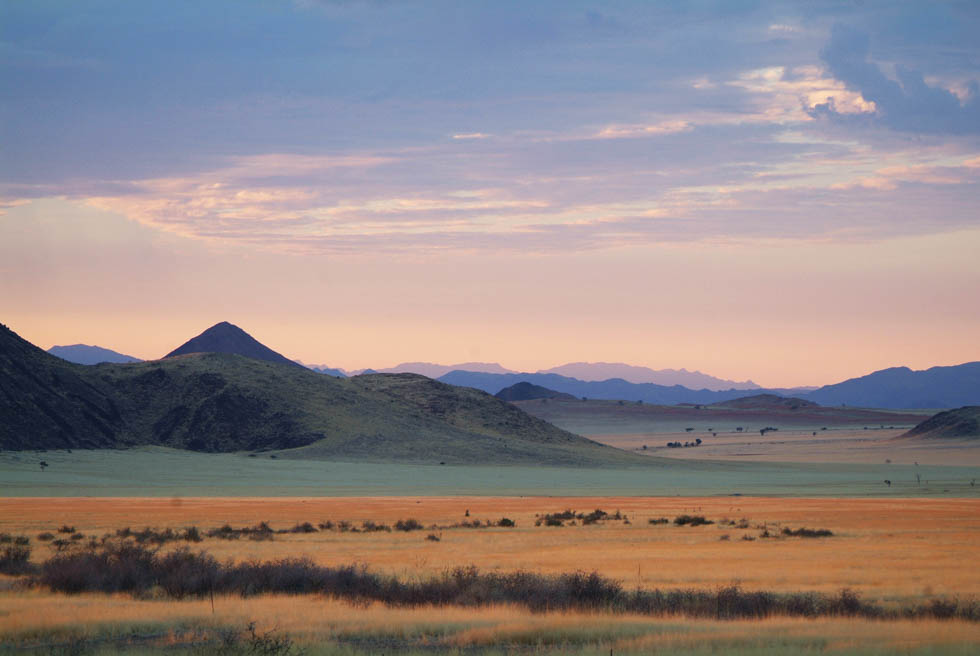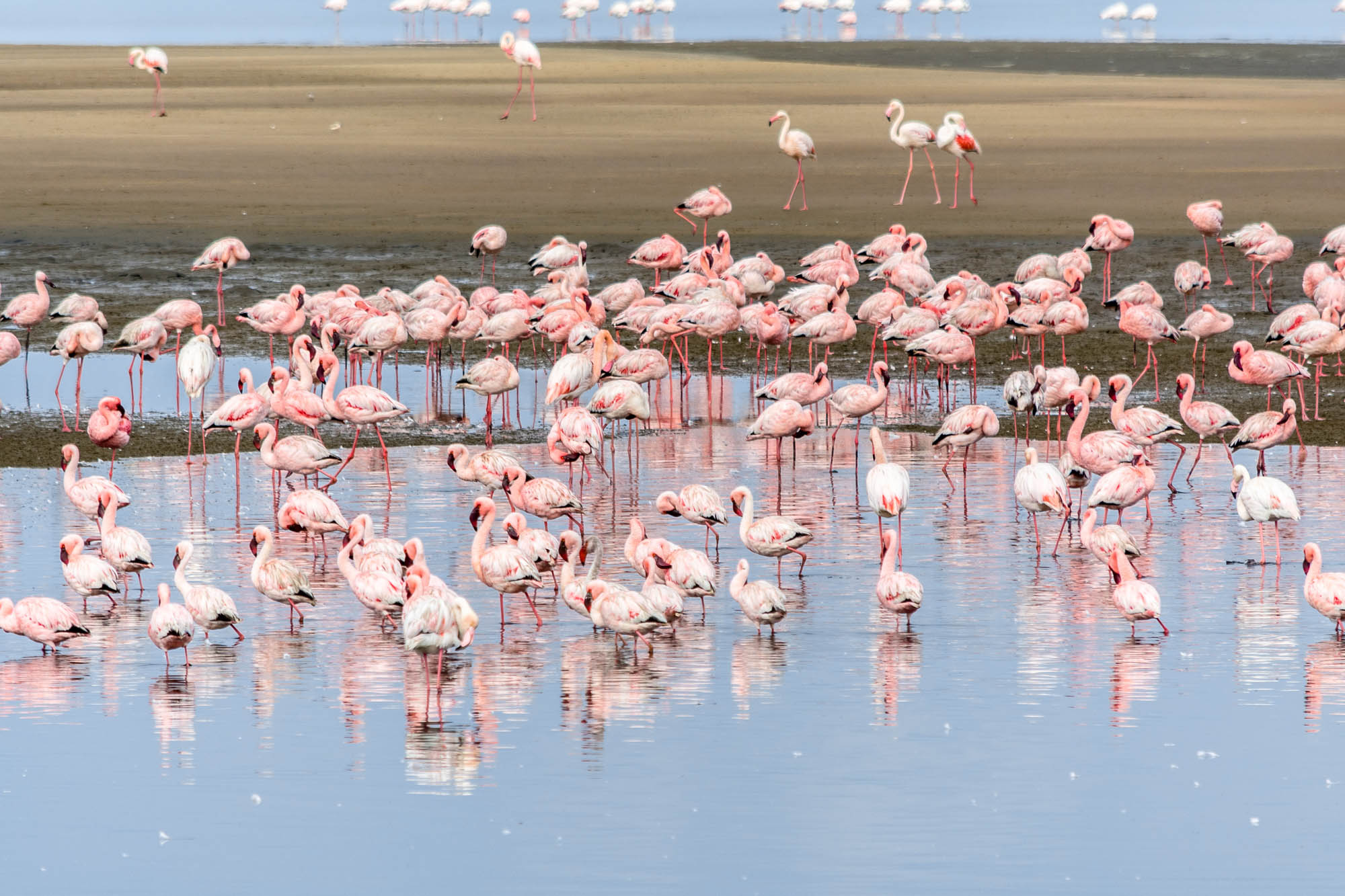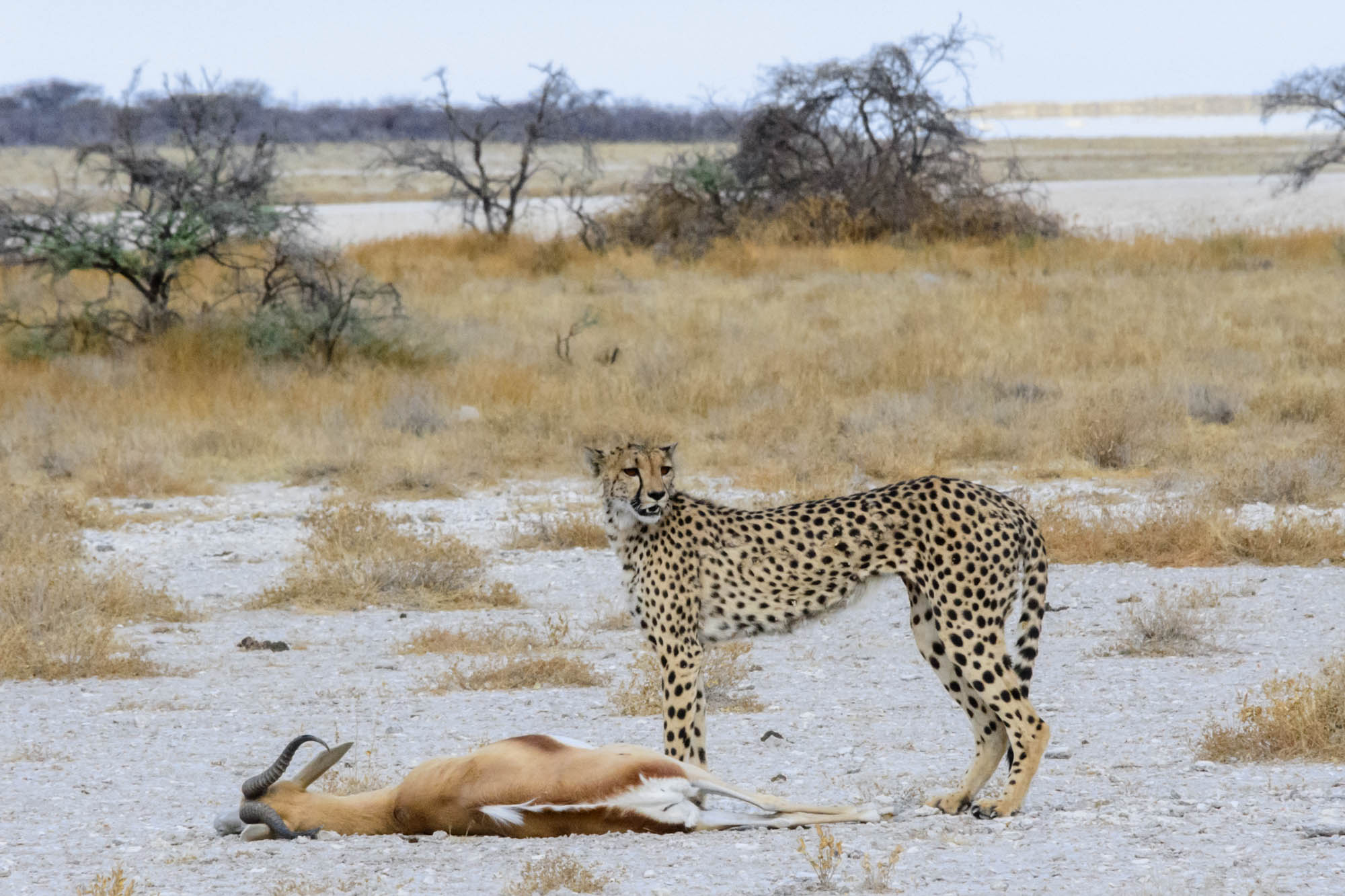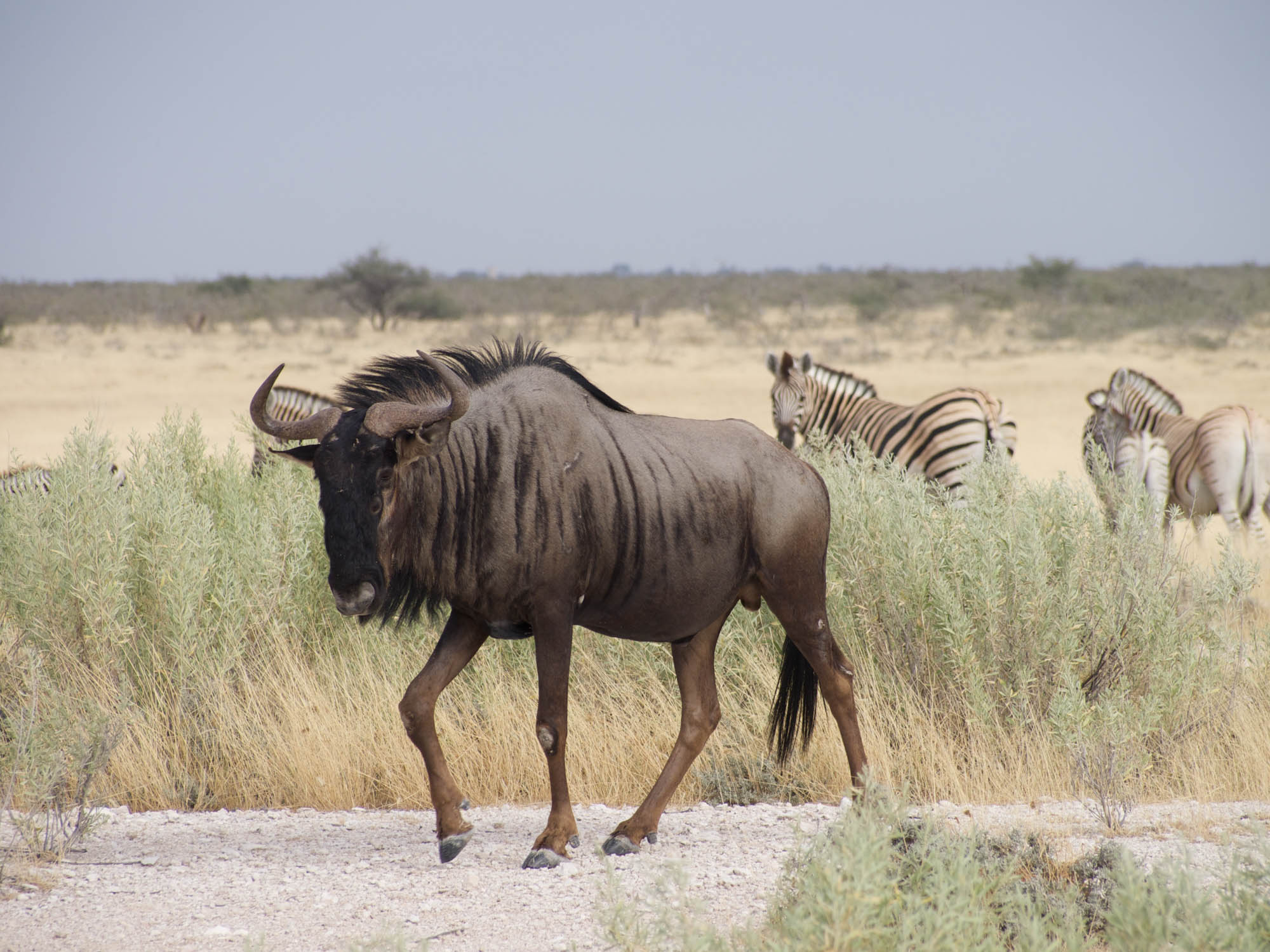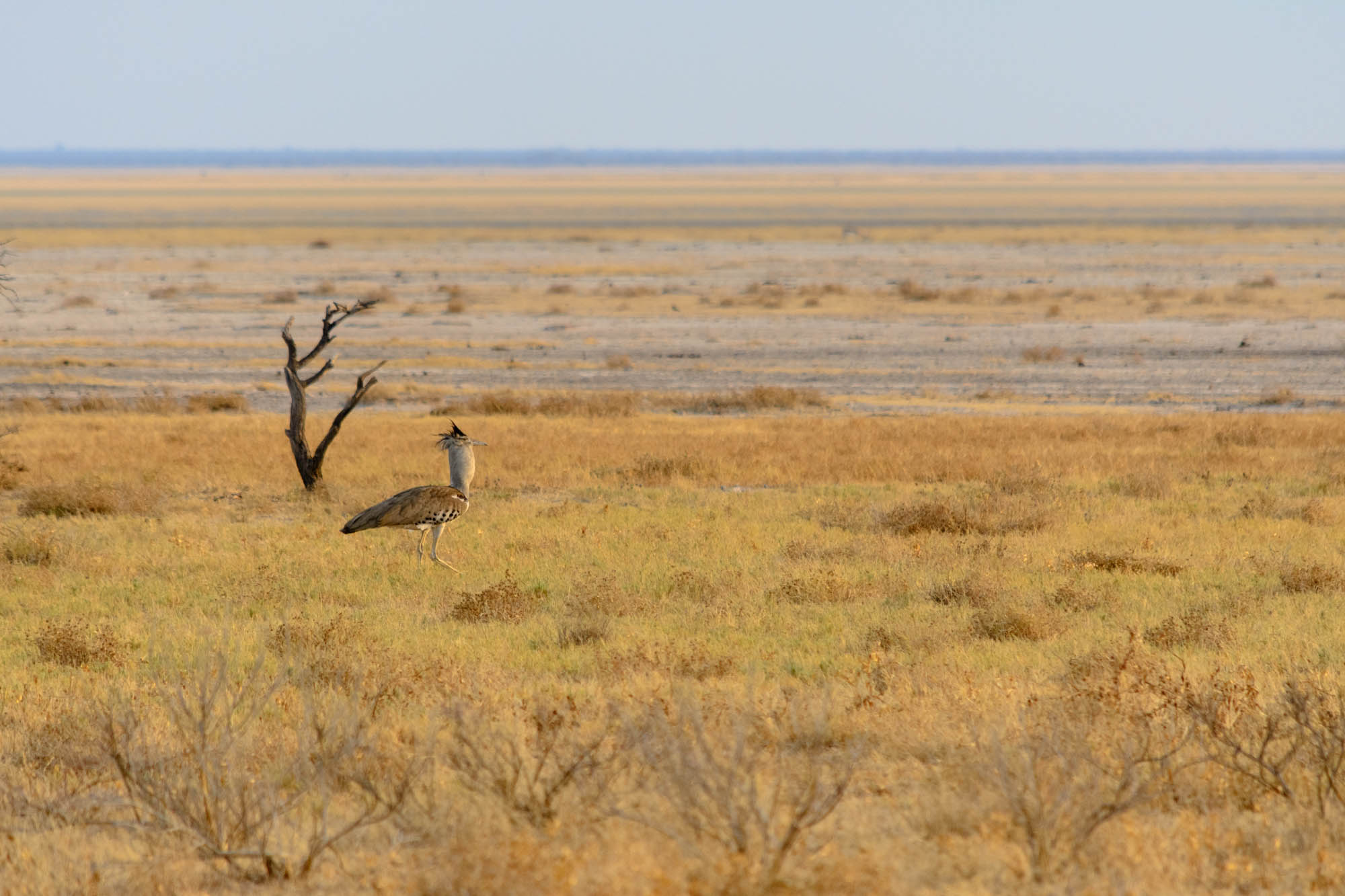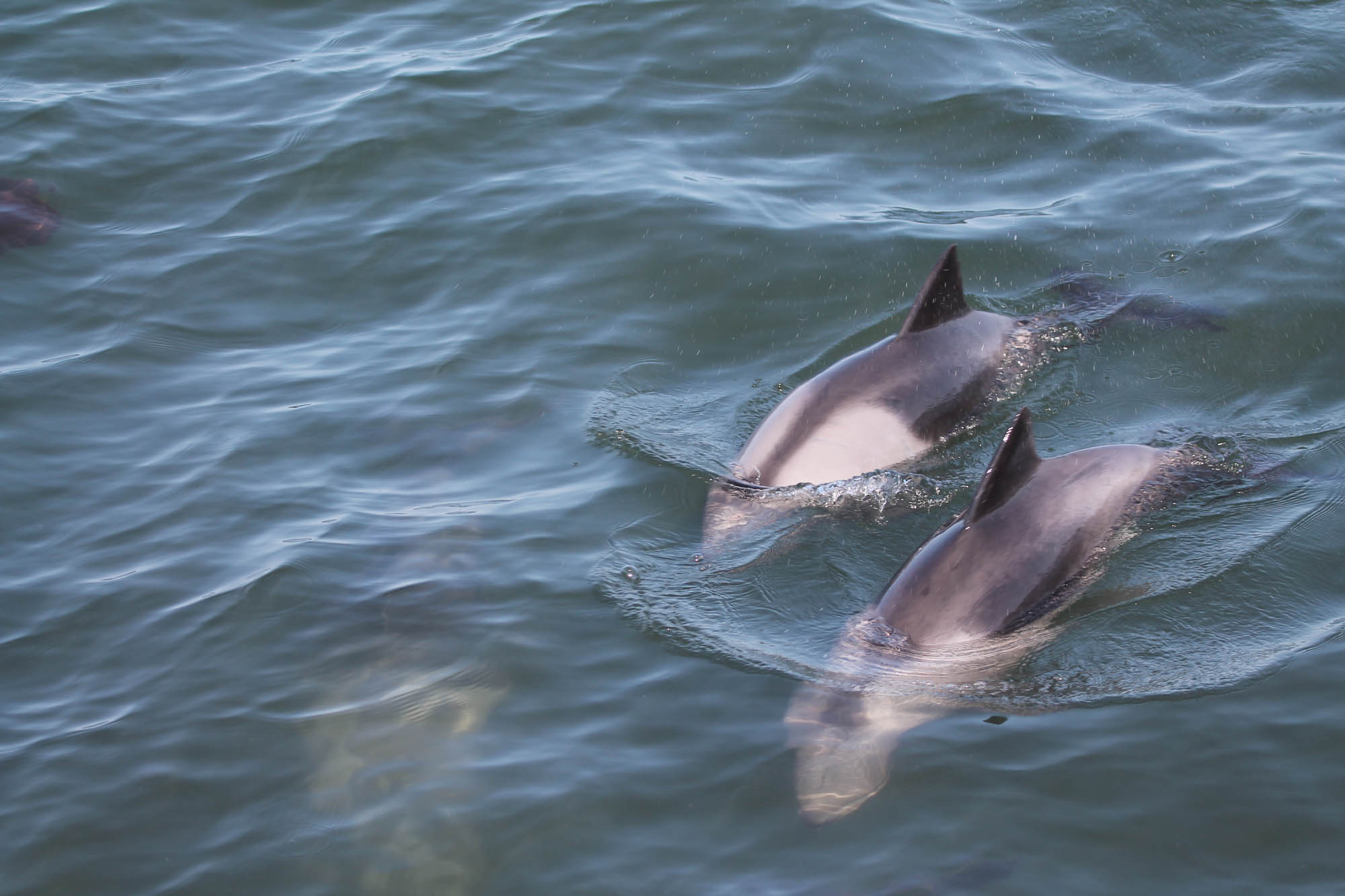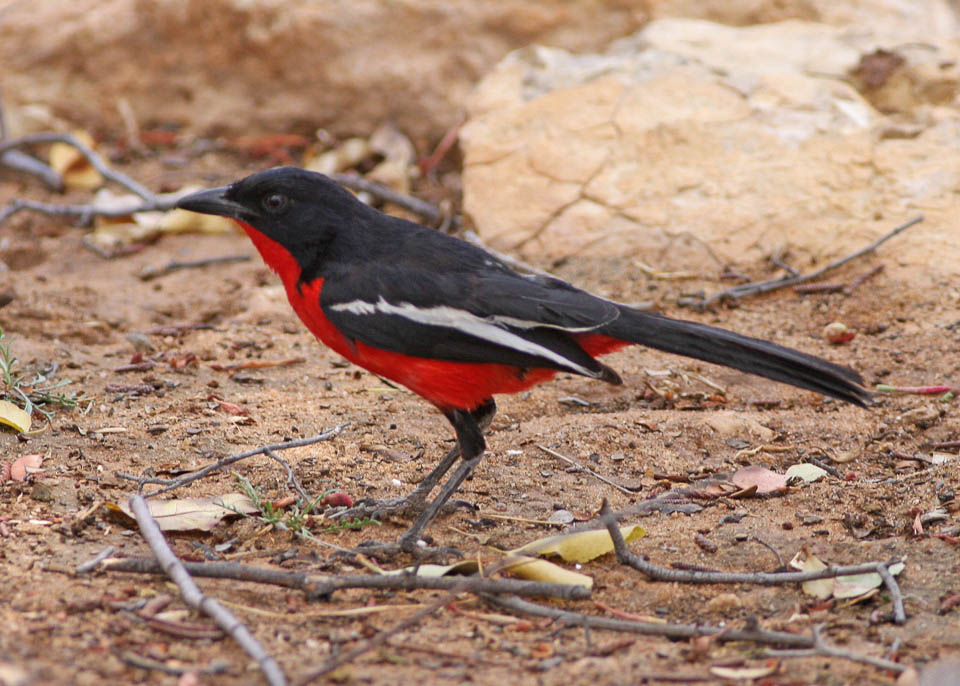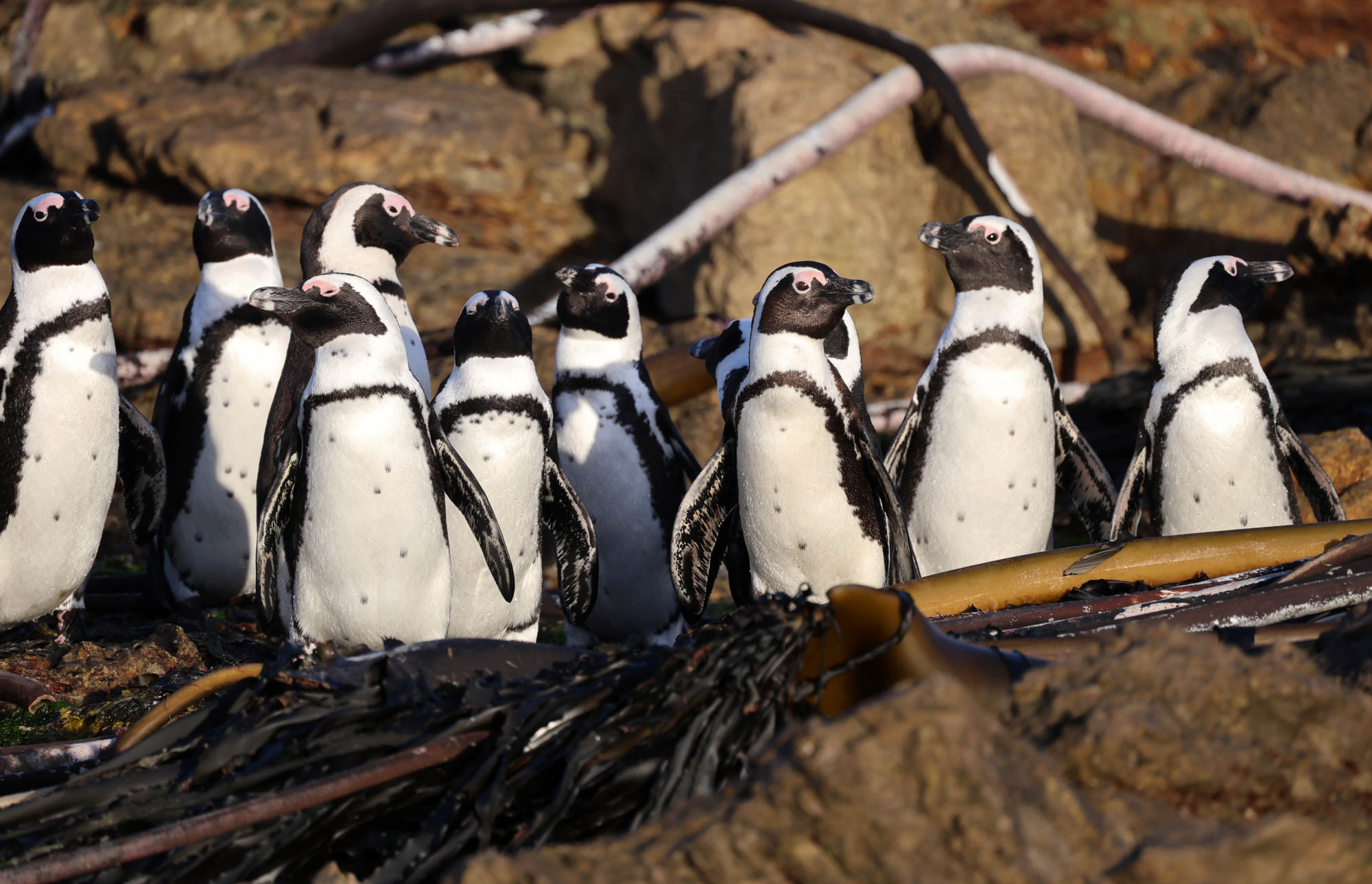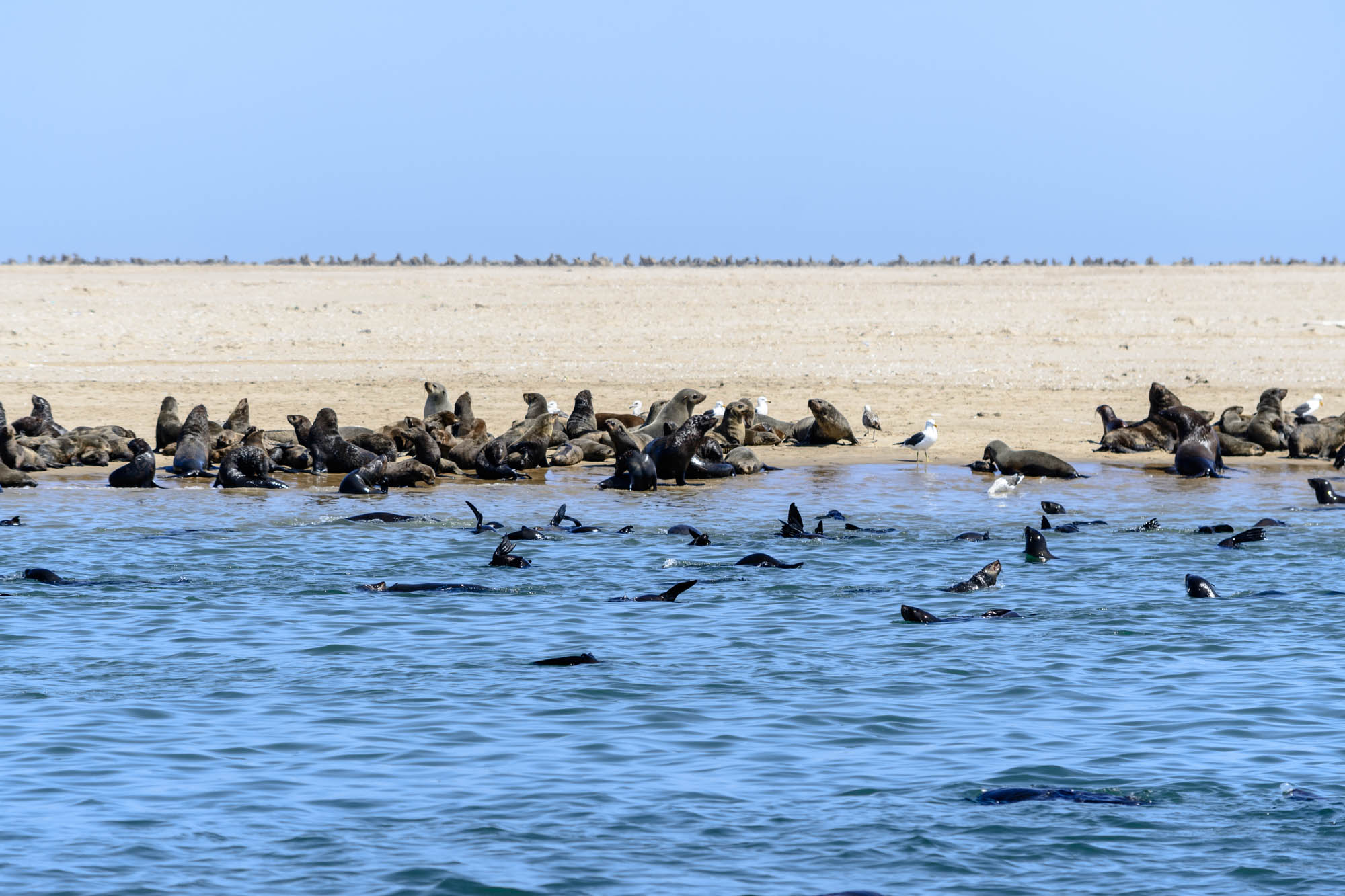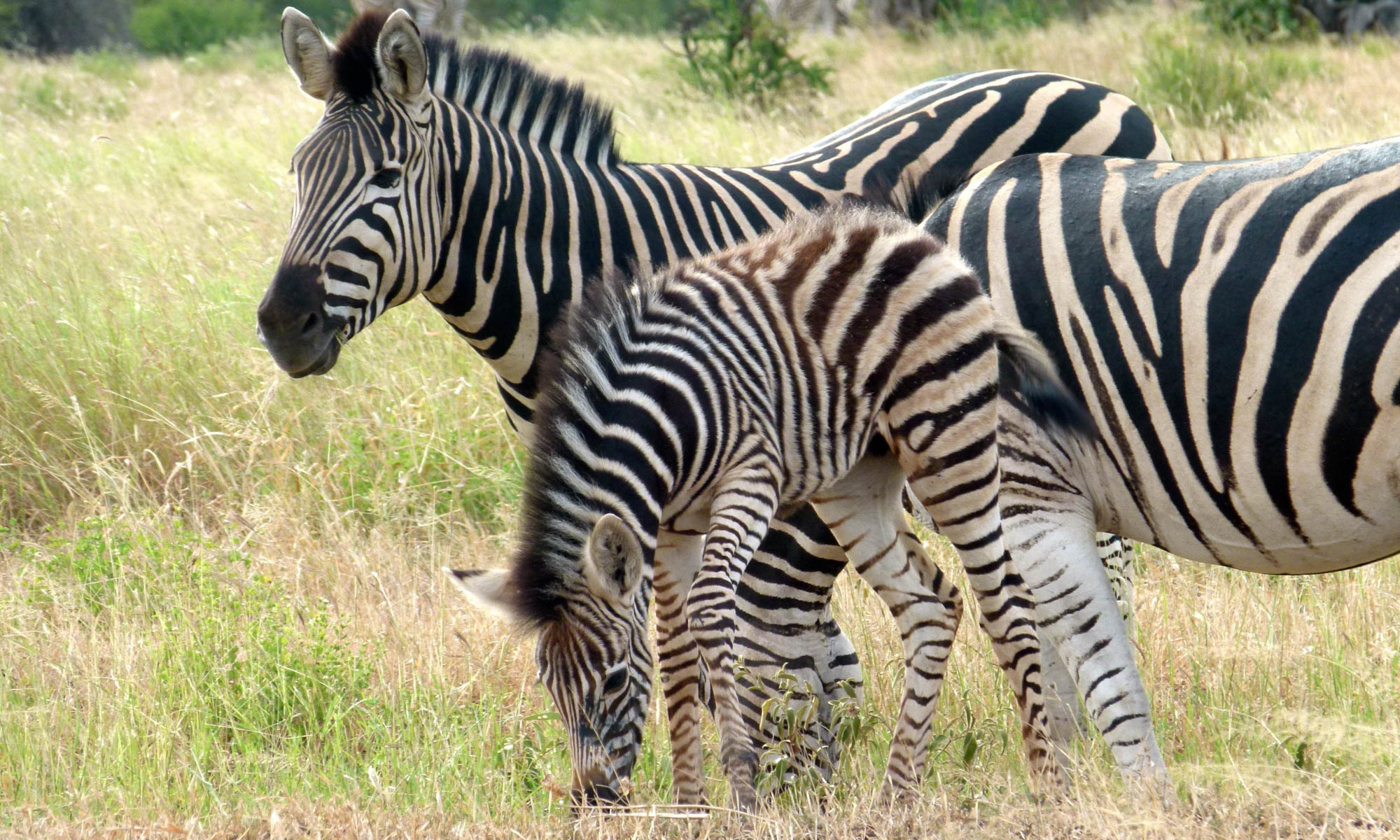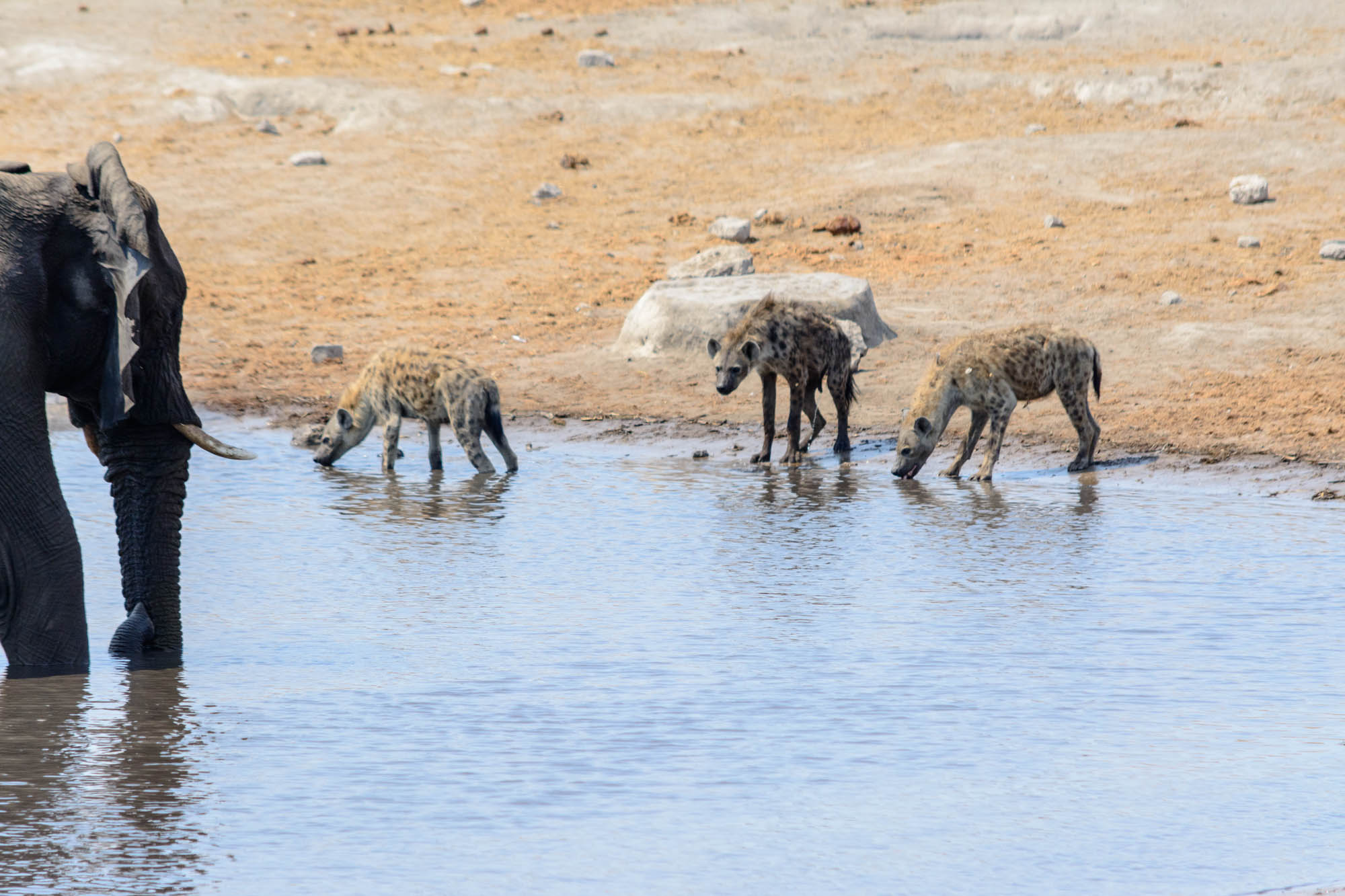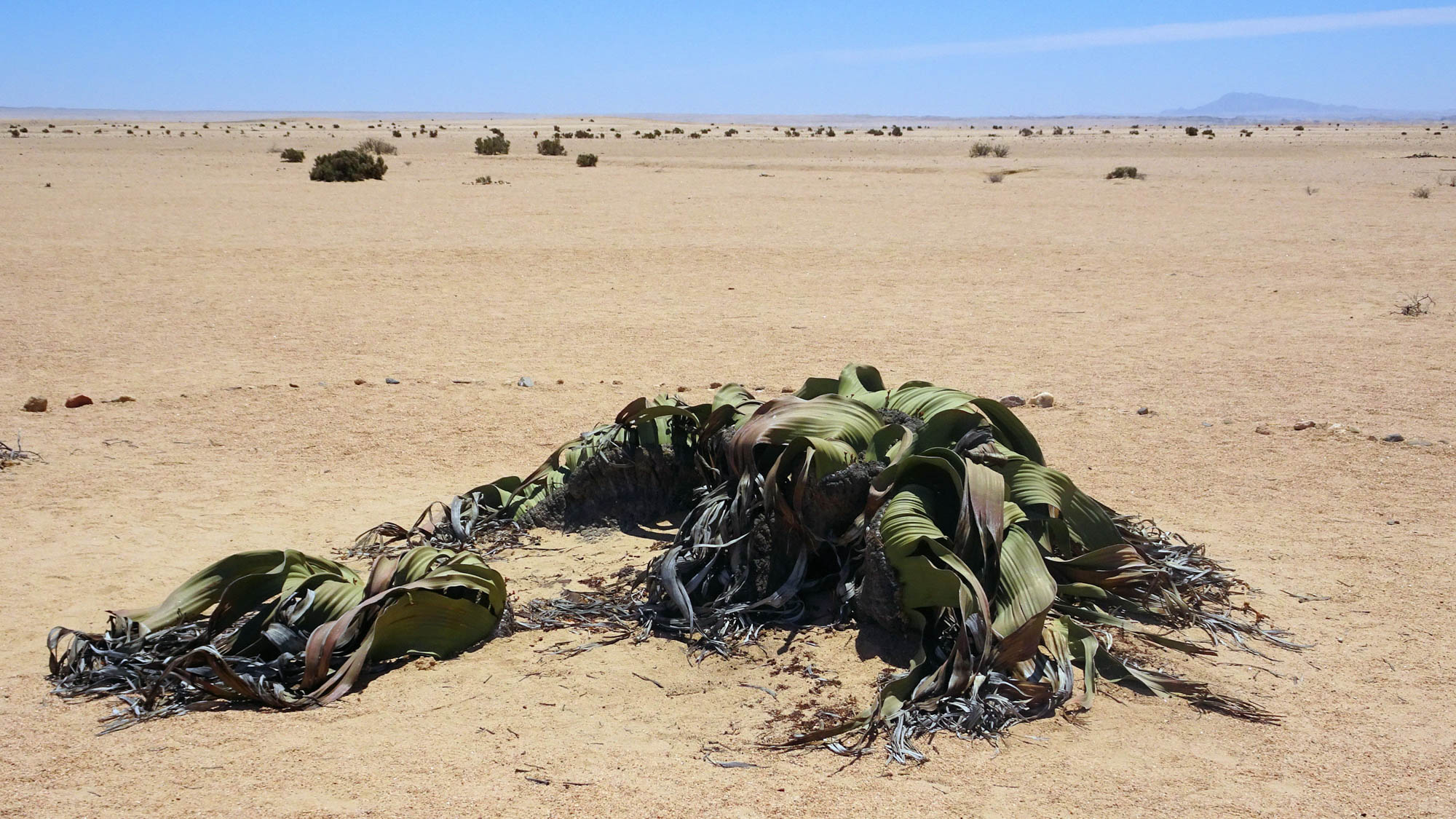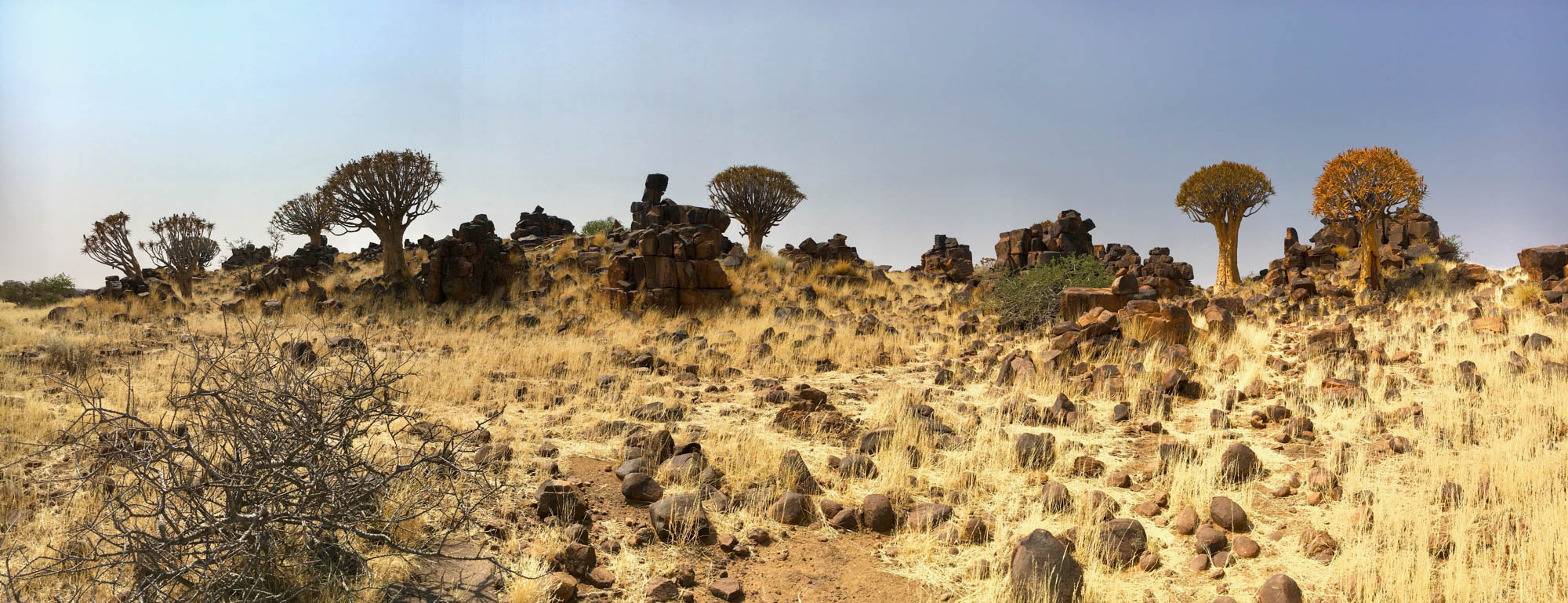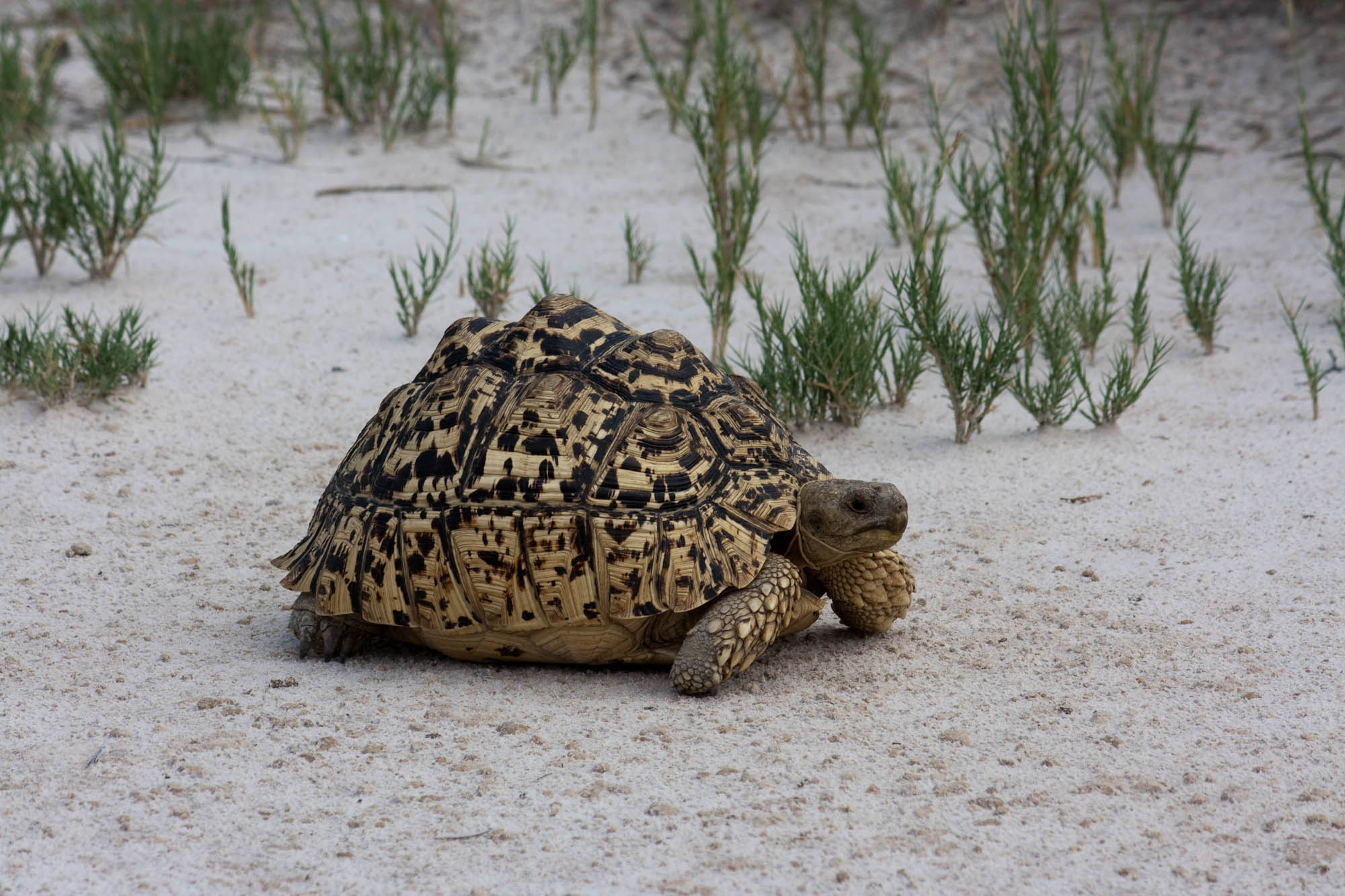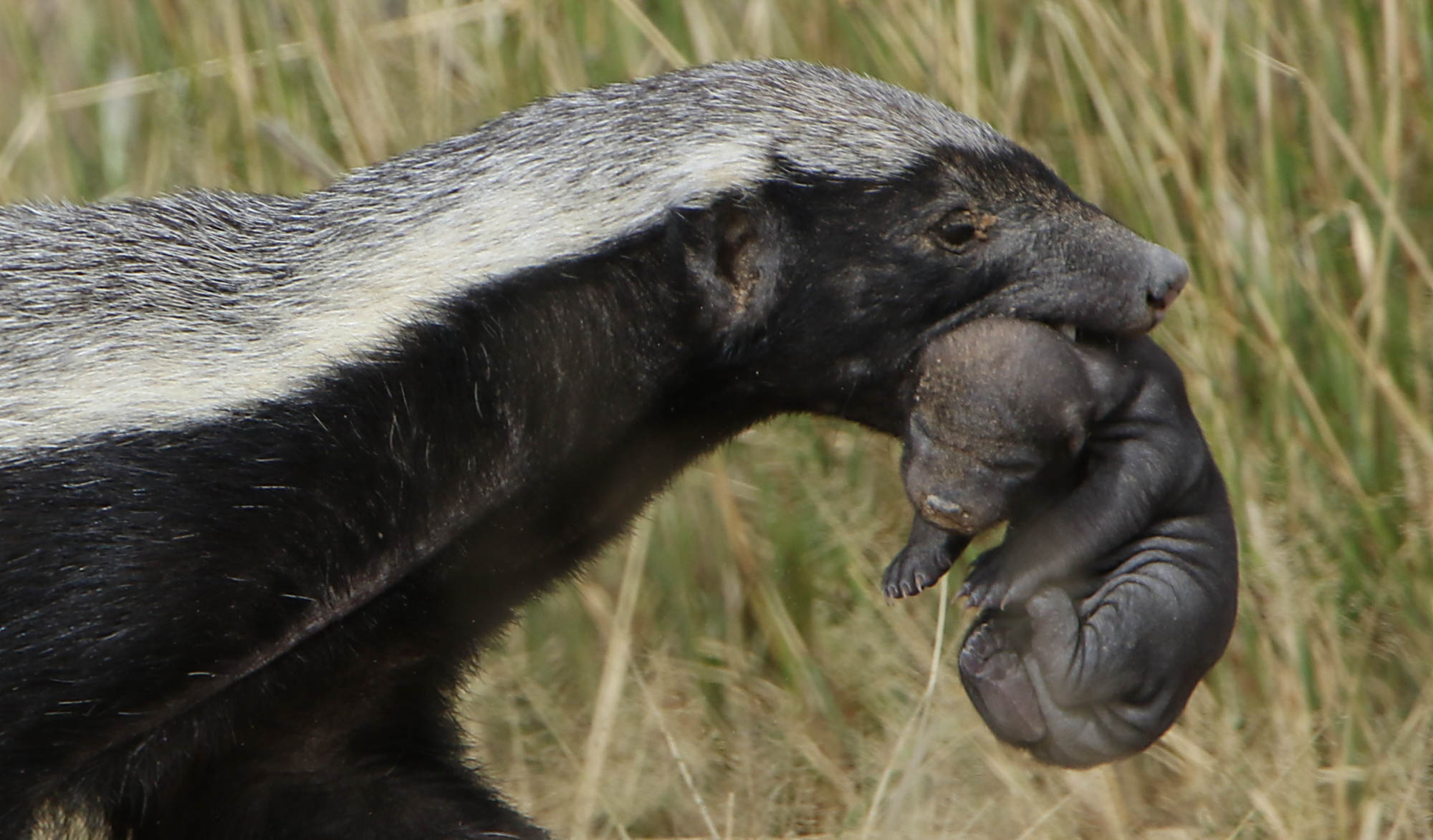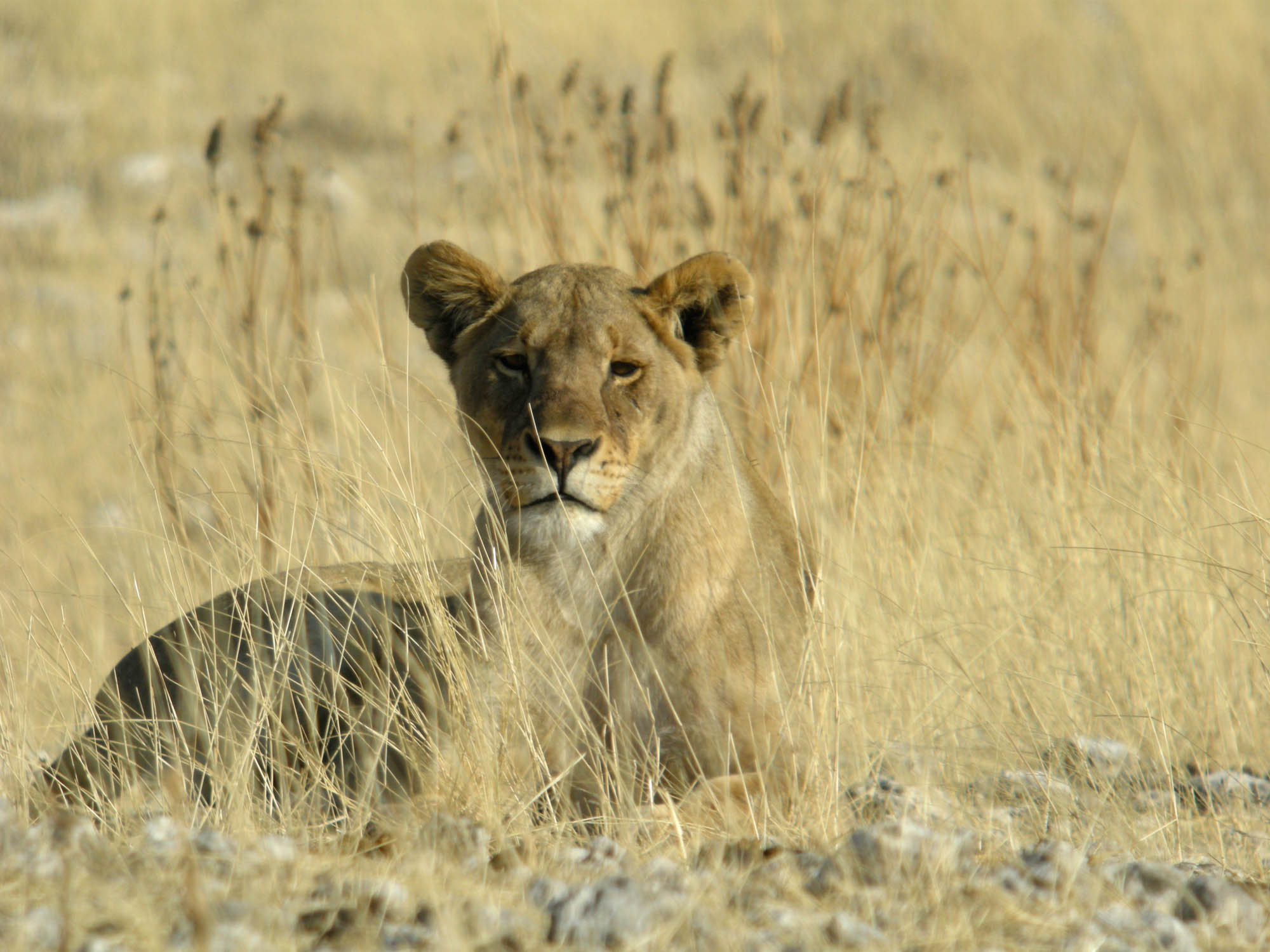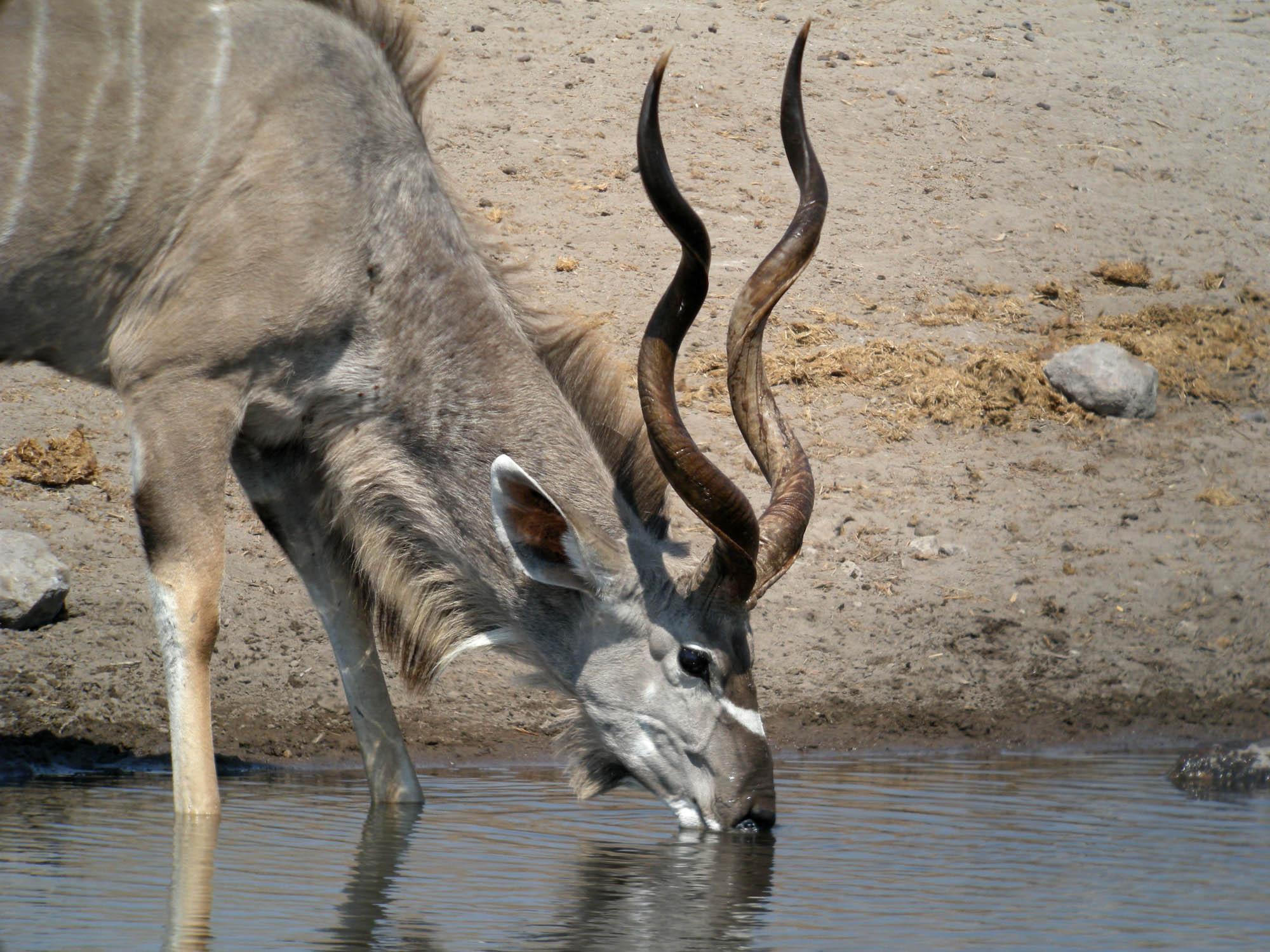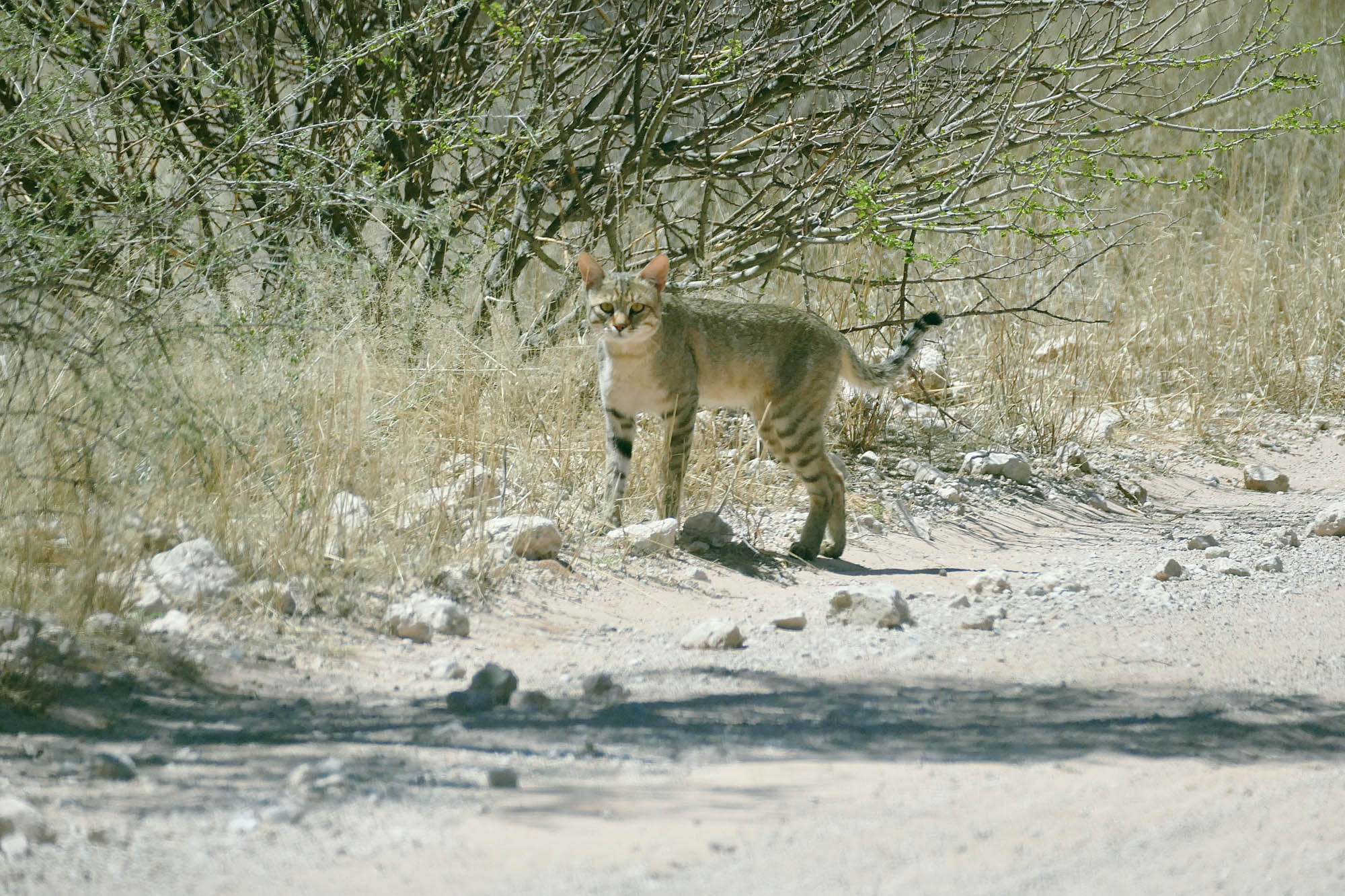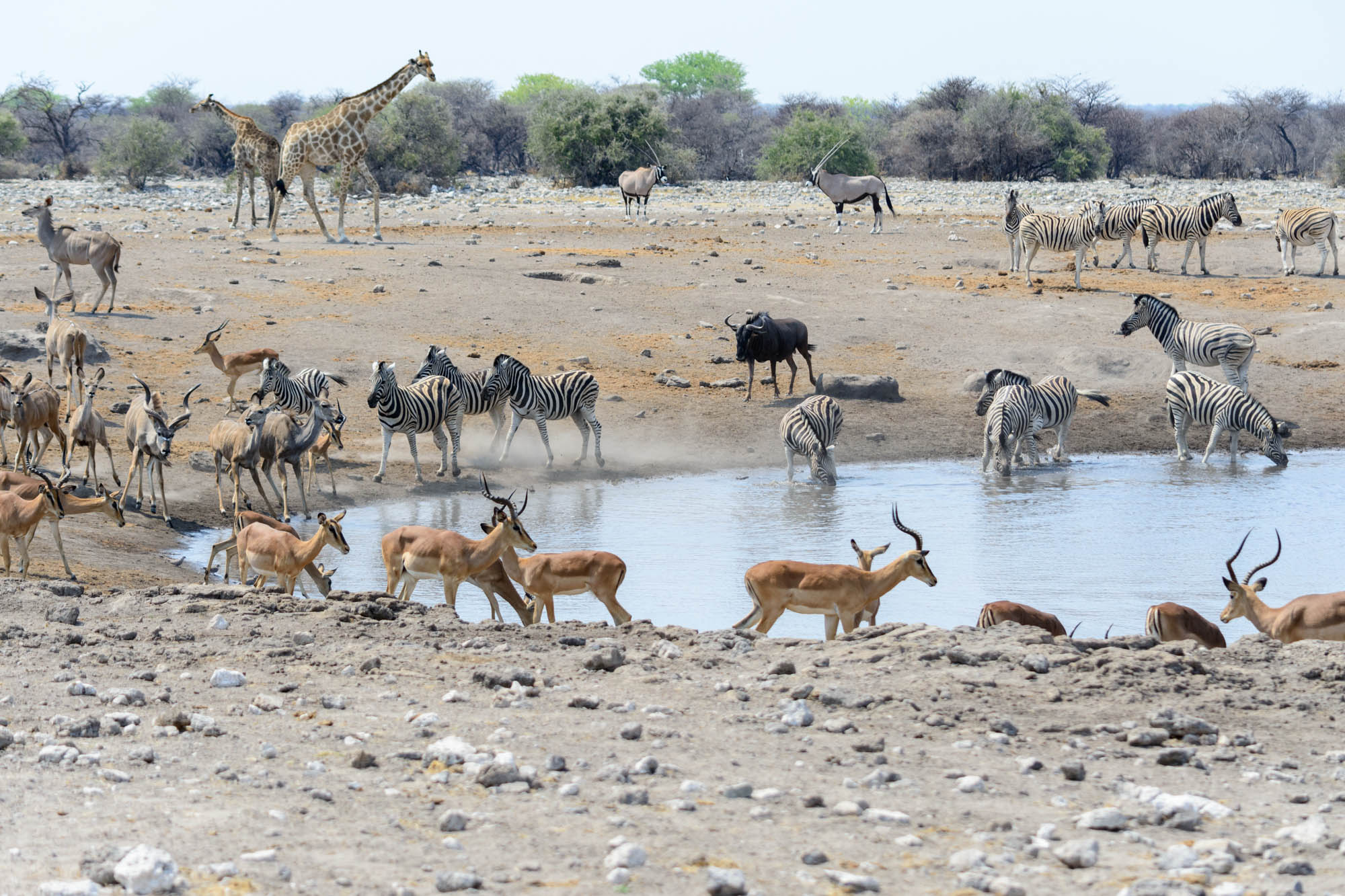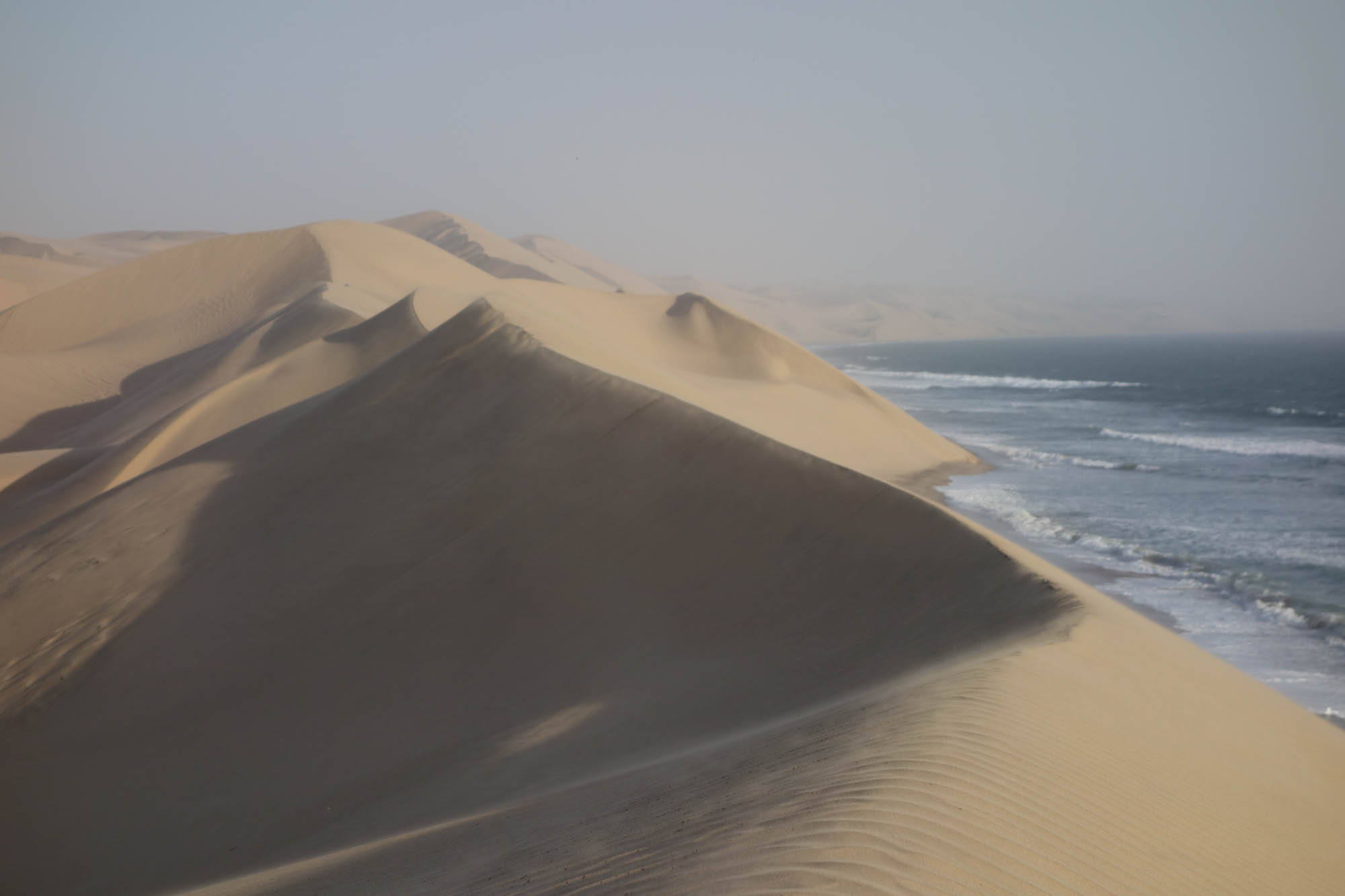

Northern Tanzania
Goa and Karnataka

Elements of Eden
Wild, bewitching and beautiful. Namibia’s startling landscapes, un-peopled panoramas, and rich and varied wildlife invites superlatives.
From the pale deserts of Damaraland the ‘Matterhorn of Africa’ rises strikingly red against a cobalt sky. At Sandwich Harbour the eye barely registers Flamingos feeding in coastal lagoons, for they are lost in the immensity of the Namib’s great dunes rising behind them. Photographers will soon be racing through the film but you’ll need to save plenty for Etosha National Park, one of Africa’s wildlife jewels. The stunning landscapes offer a glimpse of the world in a younger, purer state, before man’s clumsy footprints left their indelible marks. As dusk descends, herds of Gemsbok, Eland and Greater Kudu depart Okaukuejo’s waterhole as flocks of Sandgrouse arrive to drink. After dark it is a theatre where Rhinos, Elephants and often Lions and Hyenas, provide the drama. Elegant Blue Cranes, Red Hartebeest and Wildebeest move across Etosha’s timeless terrain as Lappet-faced Vultures and Martial Eagles soar overhead. The wildlife is often very approachable, be it impressive Giant Eagle-Owls, flocks of colourful Waxbills and Canaries, or Bat-eared Foxes cavorting in morning sunshine. At Hobatere we’ll walk in the bush, and as fast-flying Charaxes hurtle past, we’ll encounter Warthog, Elephant, Klipspringer and rare Mountain Zebra. Night-time forays should reveal the amazing Springhare, African Wild Cat, Honey-Badger, and we can hope for an Aardvark too!
By the cool climes of Walvis Bay’s beautiful desert coast we’ll see an abundance of shore and seabirds, and on boat trips Humpback Whales, Cape Fur Seals, African Penguins, and bow-riding Heaviside’s Dolphin. Inland desert holds Oryx, Korhaans, occasional elegant Quiver Trees and the bizarre Welwitschia, each plant likely to live a thousand years or more. Perhaps the highlight though will be a quest to see the remarkable Palmetto Gecko, a semi-translucent reptile whose webbed feet and long legs allow it to move rapidly over the Namib’s shifting sands. Amazingly it harvests water condensed on its own skin from the Namib’s fogs!

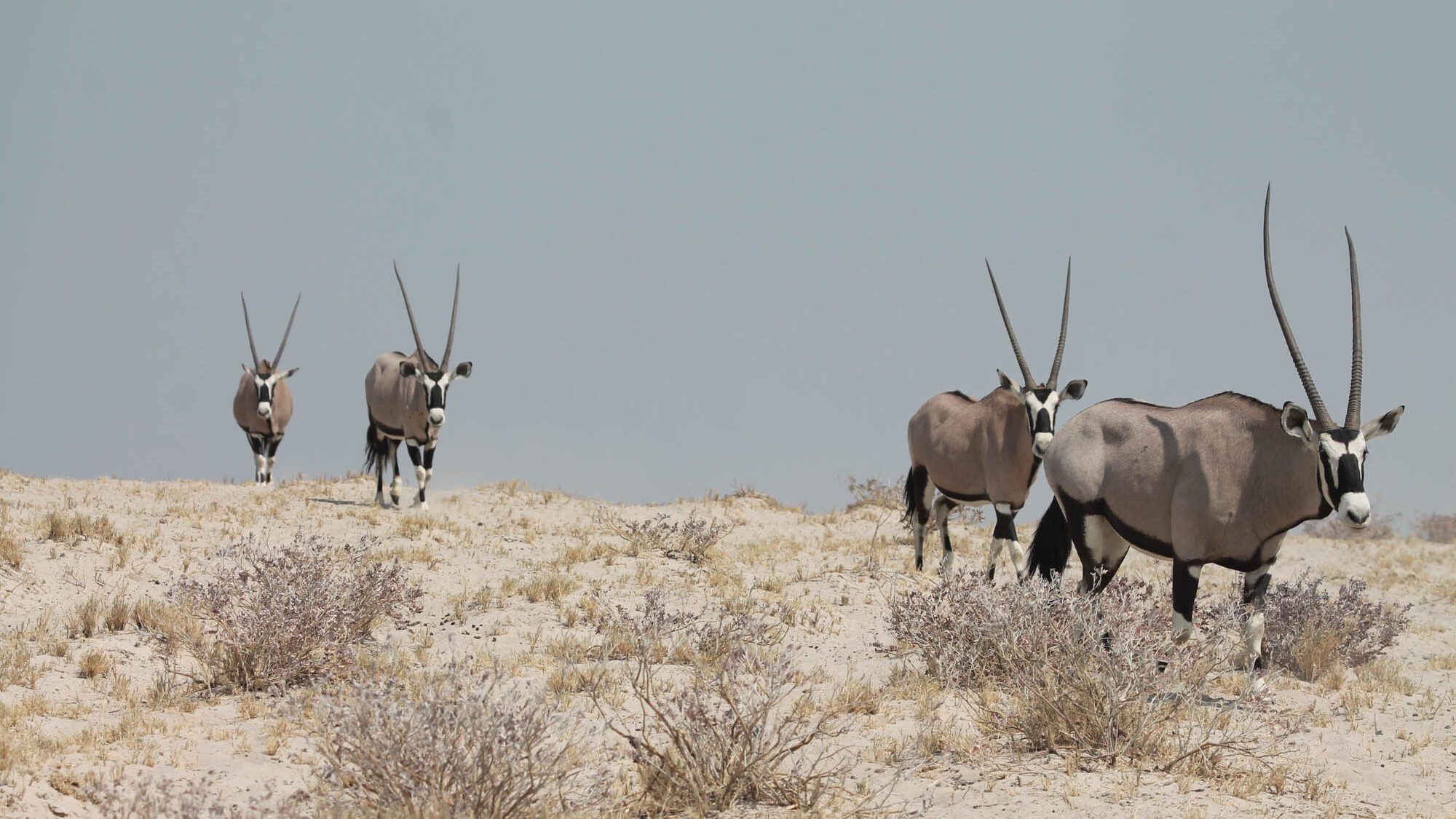
Dates and Prices
13th November - 29th November 2024 (17 days)
* doesn't apply if you're willing to share and a room-mate can be arranged
Mammals (including Cetaceans), Birds and Reptiles. Dry-land Plants, Dry-land Landscapes, and Cultural Sites.
1 leader for a group of up to 6, 2 leaders up to the maximum of 12.
All transport, meals and accommodation in Namibia. National Park and Protected Area entrance fees. Services of your leaders. Please note: drinks, tips, and items of a personal nature including insurance, are not included.
Mammal and bird checklists are available.
We start with two nights in the Waterberg Wilderness Lodge which has large modern rooms, a swimming pool, and grounds with abundant flora and fauna! We have five nights in Etosha, two at Namutoni and three at Okaukuejo. Both are government-run lodges with simple but comfortable chalets – and most importantly they are within the national park. There’s three nights at Hobatere Lodge in comfortably furnished thatched chalets/rooms. 300 meters from the swimming pool is a hide overlooking a waterhole which attracts many animals and birds. We’ll have one night at the beautiful Hohenstein Lodge not far from Spitzkoppe. Then it is on to the coast where we’ll stay at the comfortable Beach Lodge, right by the shore. All rooms on this holiday have en suite facilities.
In Etosha National Park, outside of the lodges, one has to stay in the vehicles. In other areas we are free to wander. Walking will be at a slow pace and never more than two or three miles in a day and never in the heat of the day!
UK return flights are from London Heathrow to Windhoek via Johannesburg. Other indirect routes from regional UK Airports* may be available.
*These routes may incur a supplement.
A typical semi-desert climate with daily maxima about 35°C and dry. Very often sunny, especially inland. On the coast, though it is often sunny, there are frequent fogs early and late, and the temperature reaches only 18°C or 20°C. This tour is at the cusp between dry and wet seasons, but wet is a relative term in Namibia, and any rain you might experience is likely to be short-lived!
Contact us to check if there is availability for the number of places you require. Click on the ‘Book this Tour’ button on this page to be taken to the online booking form or contact us and we will send one to you which you can complete and send back to us. You will receive confirmation of your place, and then a detailed information pack will be dispatched to you about twelve weeks before departure. This will contain up-to-date health information.
